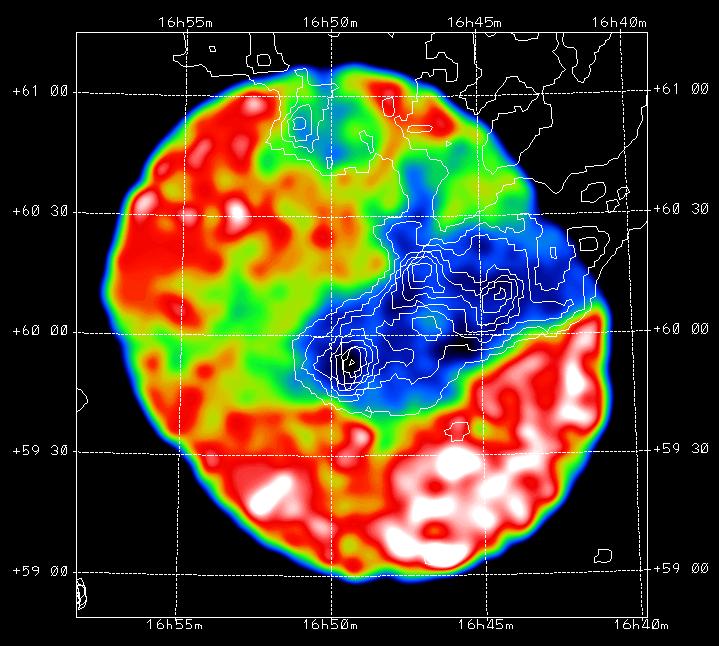
 Credit: D. Burrows/PSU
Credit: D. Burrows/PSU
Silhouettes on the X-ray Sky
The entire sky is lit by X-ray emission. Some of this emission, known as
the soft X-ray background, is believed to be produced by 1 million degree
gas that has been heated by supernova explosions at some time in the
distant past (perhaps as much as a million years ago). In order to
determine the origin of this emission, astronomers need to know how far
away it is. One way to measure the distance is to look for the silhouette
of a nearby object on the X-ray background; if an object is between us and
the source of the X-ray background, the object will block some of the
background X-ray emission. Finding this type of "X-ray shadow" would
provide at least a lower limit to the distance of the hot gas producing the
X-ray background. However, more that 20 years of X-ray observations failed
to find any such shadows, leaving the origin of the soft X-ray background a
mystery.
This situation changed after the launch of the ROSAT X-ray observatory. ROSAT's
exquisite X-ray optics and sensitivity enabled it to detect X-ray
silhouettes which were undetectable before. The image above shows the
first X-ray silhouette ever detected. This picture is a false-color image
showing the X-ray shadow (the blue-black region) of an interstellar cloud (called
the Draco nebula) on the soft X-ray background. The boundaries of the Draco
nebula are indicated by the contour lines. This clearly shows that the
X-ray brightness is lower at the location of the cloud, and thus that the
cloud is blocking some of the X-ray emission. These data were obtained by
Penn State scientists Dave Burrows & Jeff Mendenhall, (Nature, Vol.
351, p. 629, 1991) and provide the first direct observational evidence for
the existence of million degree gas in the halo of the Milky Way. For more
information about silhouettes on the X-ray background, see Dave Burrows' catalog
of X-ray shadow images.
Last Week *
HEA Dictionary * Archive
* Search HEAPOW
* Education
Each week the HEASARC
brings you new, exciting and beautiful images from X-ray and Gamma ray
astronomy. Check back each week and be sure to check out the HEAPOW archive!
Page Author: Dr. Michael F.
Corcoran
Last modified May 11, 2000


